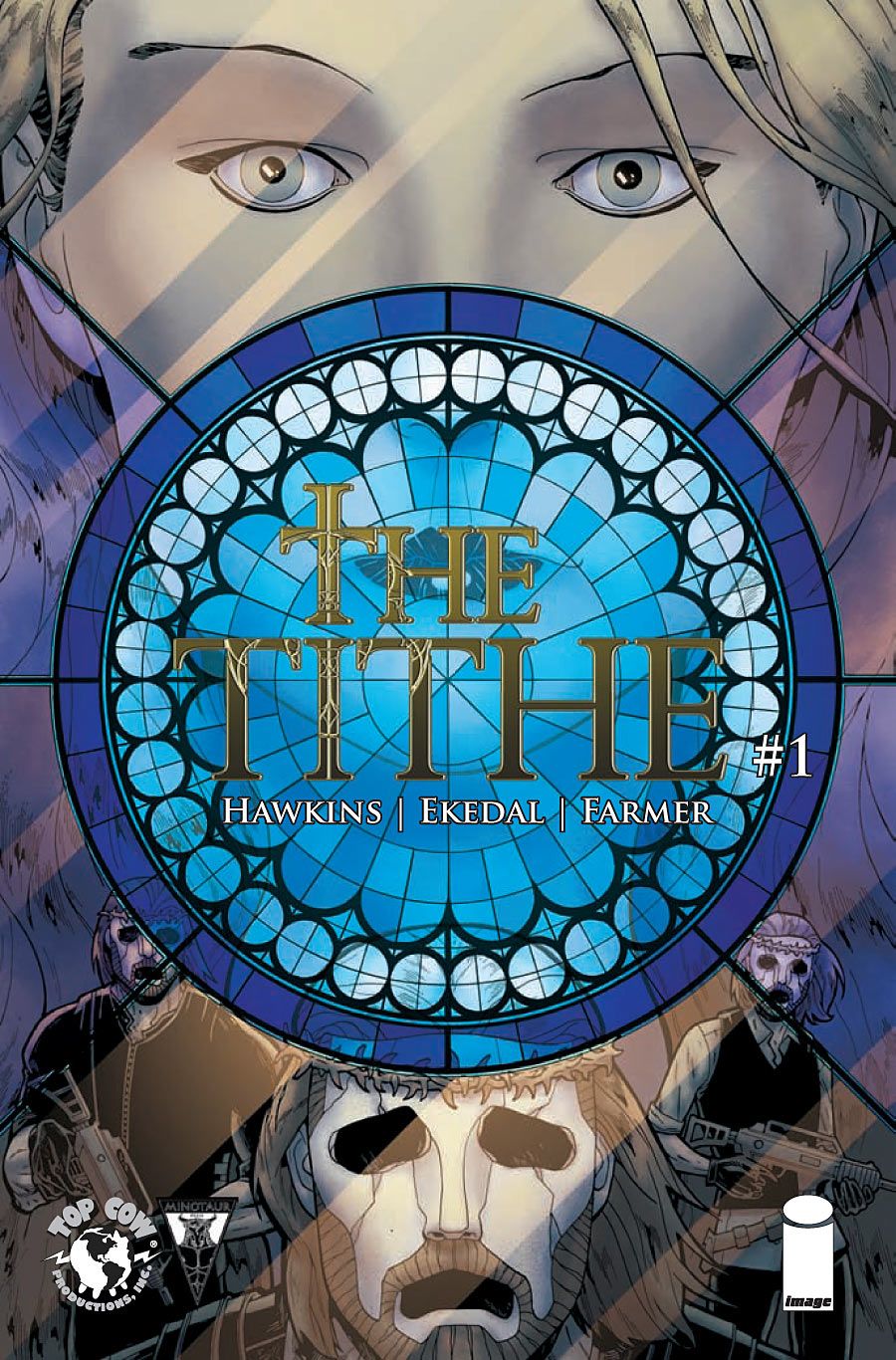Organized religion and megachurches are often vilified and therefore make natural villains for a story, but Matt Hawkins puts a twist on this notion and makes such a church both the criminal and the victim in "The Tithe" #1. Hawkins and Rahsan Ekedal take modern-day concepts like megachurches and underground hacktivism and combine them with old-school story staples like coordinated armed robberies and unlikely cop buddies to assemble a remarkably fresh first issue.
An elusive individual hacker called Samaritan has been hitting megachurches believed to be operating fraudulently, and the latest is Pastor Miles Tibbett's sprawling and opulent California-based ministry. This time, though, the operation has moved from mere hacking to physical robbery with additional manpower, an escalation deemed necessary by Samaritan because of the law-enforcement's involvement. Hawkins cleverly sets up a three-way opposition between the hackers, the church and the FBI that opens up questions and debate as to who the bad guys really are here. There are grey areas that are enticingly and deliberately blurred rather than clarified; despite the usage of firearms and explosives by the robbers, for example, Hawkins goes out of his way to show that the group has no intent of physically harming anyone and ensures that they, in fact, do not.
Tibbett is the slick, personable and charming TV-style evangelist who is literally worshipped by his followers but is looked at with suspicion by everyone else, a feeling that Hawkins successfully evokes in readers. Despite being robbed of millions of dollars, there's little sympathy to be had for Tibbett, something that's clearly conveyed by investigator Agent Dwayne Campbell, who immediately shows his misgivings about Tibbett while indirectly validating the acts of Samaritan even while investigating the robbery. His younger and tech-savvy FBI partner, Jimmy Miller, shows a grudging admiration for the hackers even as he tries to outsmart them.
Hawkins plays on fairly typical, cop-buddy tropes here; Campbell is the older, God-loving family man, while Miller is the young and single cyber-rebel who almost plays the son figure to Campbell. It works just fine, though, as the pair's opposing views on religion and differences in technological understanding add a relevance to the themes of the story and aren't just tossed in as a tactic to throw an unrelated human element into the mix. Hawkins adds an interesting dynamic between Miller and Samaritan, the latter of which plays a cat-and-mouse game with the former, which only inspires him even more.
Ekedal doesn't try to get fancy with the art; his interpretation of the victimized megachurch makes it a very fine looking place for a robbery, both the fleecing of its congregation and the emptying of its vault. There's a draftsman-like precision to the church's interiors and exteriors, and that precision translates well to the characters, who are all immediately identifiable. The panel layouts are largely traditional and service Hawkins' story perfectly; there is no need for any splashes or larger panels, for the most part, and the smaller panels that are more prevalent are perfect for providing the flow to establish the characters. Similarly, colorist Bill Farmer doesn't try to impress, either, but instead is just content to move the story along, perhaps recognizing that sometimes the best art is the kind that isn't flashy.
"The Tithe" #1 is a very well-composed introduction that's both relevant to issues of the day and uses some traditional story elements, which combine to deliver a strong and approachable story with a fresh flavor.

